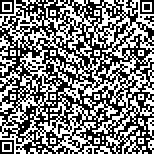|
| 引用本文: | 陈学超,朱丽岩,黄 瑛,巩文静,郝 雅.南黄海浮游动物群落结构研究[J].海洋科学,2017,41(10):41-49. |
| |
|
| |
|
|
| 本文已被:浏览 2272次 下载 2356次 |

码上扫一扫! |
|
|
| 南黄海浮游动物群落结构研究 |
|
陈学超1, 朱丽岩1, 黄 瑛2, 巩文静1, 郝 雅1
|
|
1.中国海洋大学 海洋生命学院;2.农业部渔业遥感科学观测实验站
|
|
| 摘要: |
| 根据2014年春、秋季南黄海16个站位的生物样品进行了浮游动物群落结构研究。共鉴定出99种浮游动物, 其中春季68种, 秋季78种。除浮游幼虫外, 种类较多的类群是桡足类(34种, 占总种类数的34.3%)、水螅水母(13种, 13.1%)和端足类(5种, 5.0%)。春季优势种为夜光虫(Y=0.259 7)、桡足幼体(Y=0.135 3)、拟长腹剑水蚤(Y=0.060 8)和伪长腹剑水蚤(Y=0.022 4), 秋季时桡足幼体(Y=0.335 9)、伪长腹剑水蚤(Y=0.115 7)、强额拟哲水蚤(Y=0.053 3)、桡足类无节幼虫(Y=0.051 4)和拟长腹剑水蚤(Y=0.041 0)是优势种。春季浮游动物平均生物量为1 555.1 mg/m3, 秋季为425.8 mg/m3。春季平均丰度为9 551.4个/m3, 秋季为2 103.7个/m3。秋季香农-威纳指数、丰富度和均匀度结果皆比春季的高。浮游动物生物量与温度和水深相关性更高; 丰度和温度相关性最高, 其次和水深相关。 |
| 关键词: 浮游动物 群落结构 优势种 环境因子 南黄海 |
| DOI:10.11759/hykx20160428005 |
| 分类号: |
| 基金项目:中国水产科学研究院农业部渔业遥感科学观测实验站开放基金项目(OFSOESFRS201508); 国家自然科学基金项目(31172412,31572621) |
|
| Community structure of the zooplankton in the Southern Yellow Sea |
|
CHEN Xue-chao,ZHU Li-yan,HUANG Ying,GONG Wen-jing,HAO Ya
|
| Abstract: |
| In this study, we investigated the zooplankton community structure based on samples from the Southern Yellow Sea during spring and autumn. We identified a total of 99 species of zooplankton (78 species from the spring samples and 68 from the autumn samples). Apart from zooplankton larvae, there were 34 species of Copepods (34.3% of total), 13 species of Hydromedusae (13.1%), and five species of Amphipods (5.0%). We consider there to be four dominant species in spring—(Noctiluca scintillans (Y = 0.259 7), Copepoda larva (Y = 0.135 3), Oithona similis (Y = 0.060 8), and O. fallax (Y = 0.022 4))—and five in autumn—(Copepoda larva (Y = 0.335 9), O. fallax (Y = 0.115 7), Paracalanus crassirostris (Y = 0.053 3), Nauplius larva (Copepoda) (Y = 0.051 4), and O. similis (Y = 0.041 0)). The average biomass of zooplankton during spring was 1 555.1 mg/m3, which decreased to 425.8 mg/m3 during autumn. The average abundance of zooplankton in spring was 9 551.4 ind/m3, which decreased to 2 103.7 ind/m3 in autumn. The autumn Shannon–Wiener, Pielou, and Margalef indexes were all higher than those in spring. The zooplankton biomass was relevant to either temperature or depth. Zooplankton abundance was most relevant to temperature, followed by depth. |
| Key words: Zooplankton community structure dominant species environmental factors Southern Yellow Sea |
|
|
|
|
|
|
